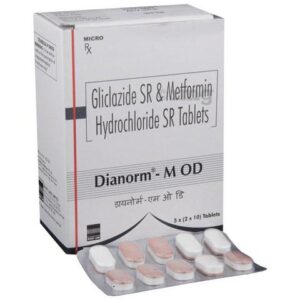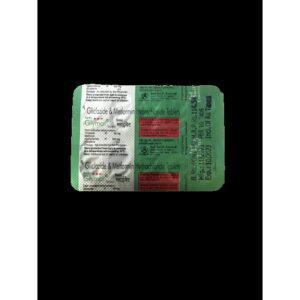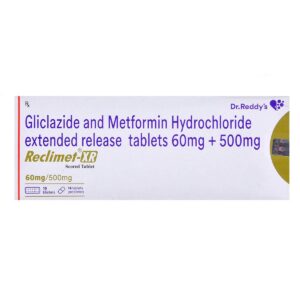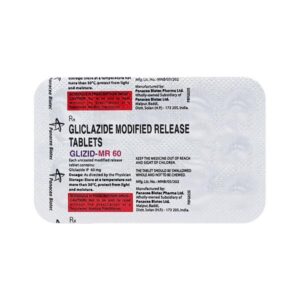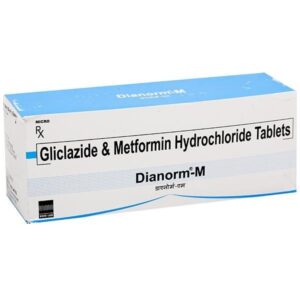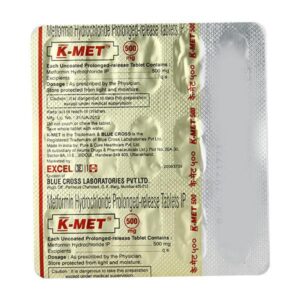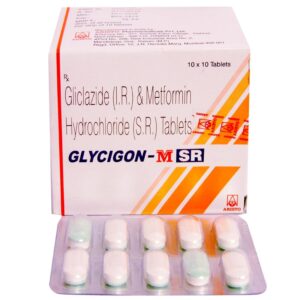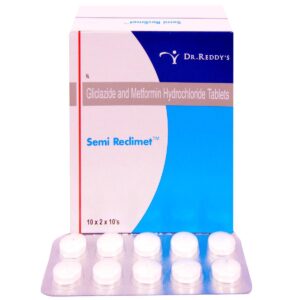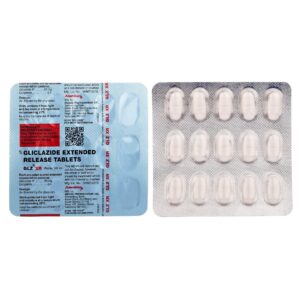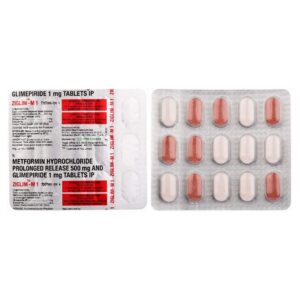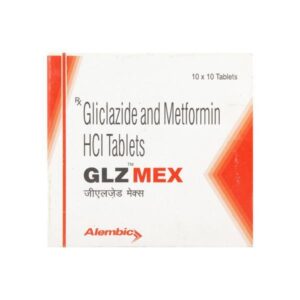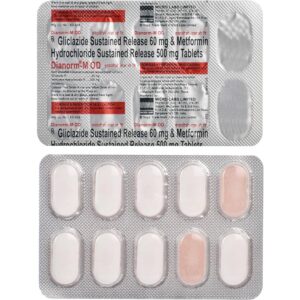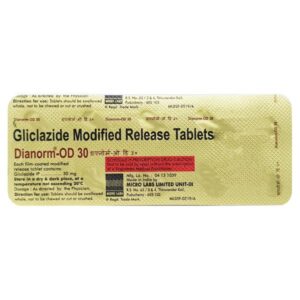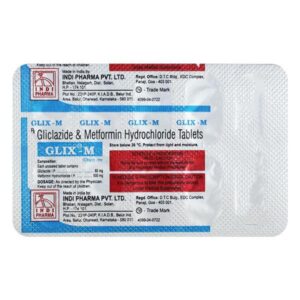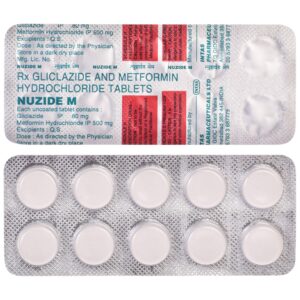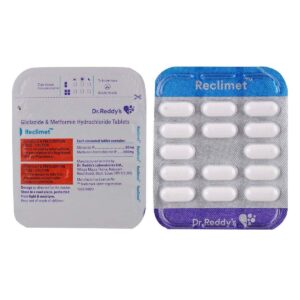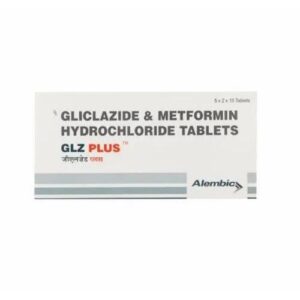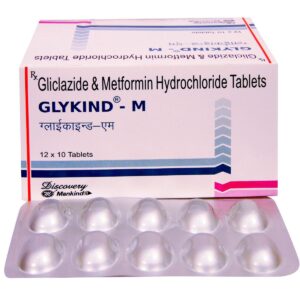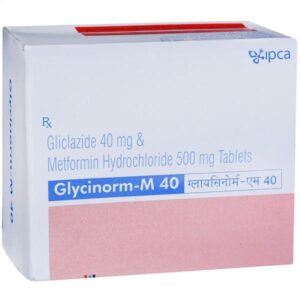METFORMIN + GLICLAZIDE
Metformin: Metformin is a medication used to treat type 2 diabetes. It belongs to the class of drugs known as biguanides. Metformin is commonly prescribed as the first-line treatment for type 2 diabetes, especially in patients who are overweight or obese.
The primary mechanism of action of Metformin involves reducing glucose production in the liver and improving insulin sensitivity in the muscles and adipose tissues. It does not increase insulin secretion from the pancreas. By decreasing glucose production and increasing utilization of glucose by the cells, Metformin helps to lower blood sugar levels and improve glycemic control.
The initial dose of Metformin is usually 500 mg or 850 mg taken orally, once or twice a day, with meals. The dosage may be gradually increased based on blood sugar levels and response to therapy. The maximum recommended daily dose is 2,550 mg. Metformin is available in immediate-release and extended-release formulations. The extended-release form is taken once daily.
Some common side effects associated with Metformin include gastrointestinal disturbances such as diarrhea, nausea, vomiting, and abdominal discomfort. These side effects are usually mild and temporary. Taking the medication with food can help alleviate these symptoms. Rare but serious side effects include lactic acidosis, a buildup of lactic acid in the blood that can be life-threatening, particularly in patients with kidney or liver problems. It is important to monitor kidney function regularly when taking Metformin.
In some cases, Metformin can cause vitamin B12 deficiency, resulting in symptoms such as anemia, neuropathy, and fatigue. Regular monitoring of vitamin B12 levels is recommended in patients on long-term Metformin therapy.
It’s important to note that Metformin should not be used in patients with severe kidney impairment or liver disease. It is also contraindicated in individuals with a history of lactic acidosis or hypersensitivity to the drug. Before starting Metformin, it is essential to inform your healthcare provider about any other medications you are taking, as there may be potential drug interactions.
Overall, Metformin is an effective and widely used medication for managing type 2 diabetes. Its main benefits include improving glycemic control, aiding in weight loss, and reducing the risk of cardiovascular complications associated with diabetes.
Gliclazide: Gliclazide is an oral medication that belongs to the class of drugs known as sulfonylureas. It is primarily used to treat type 2 diabetes mellitus, a condition characterized by high blood sugar levels.
The mechanism of action of gliclazide involves stimulating the release of insulin from the pancreas, which helps lower blood sugar levels. It does this by binding to ATP-dependent potassium channels on the beta cells of the pancreas, leading to an increase in insulin secretion.
The dosage of gliclazide may vary depending on the individual’s response to treatment and their blood sugar levels. Typically, the starting dose is around 40-80mg taken once daily with breakfast or the first main meal of the day. However, the dose may be increased gradually if necessary, under the supervision of a healthcare professional. The maximum recommended dose is 320mg per day.
Like any medication, gliclazide can cause side effects. The common side effects include hypoglycemia (low blood sugar), which can manifest as symptoms like dizziness, shakiness, sweating, and confusion. Other less common side effects may include gastrointestinal disturbances like nausea, vomiting, diarrhea, and abdominal pain. Rarely, gliclazide can also cause skin reactions such as rash or itching. In very rare cases, it may cause liver problems or blood disorders.
It is important to note that gliclazide should only be taken under the supervision and guidance of a healthcare professional. The dosage and administration of the drug may differ for each individual, so it is essential to follow the prescribed instructions and regularly monitor blood sugar levels while using gliclazide.

